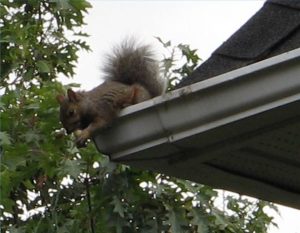Product Blog
Using Traps To Keep Squirrels Out Of Your Attic!
Squirrels are able to easily adapt to new environments. While they build nests high up tall trees and live in them in the wild, they can also take over attics of your urban or suburban home. They see your attic as a hole in a tree where they can find warmth and safety from predators. The animals are excellent climbers so there’s no spot on your roof that they could not access if they so chose. And because they are impressive chewers, they can also chew their way into your home’s attic.
Squirrels are more than a simple annoyance

Getting squirrels out of your attic can be a daunting task. The truth is, there really isn’t a silver bullet that can get them off your attic in an instant. Sometimes it takes a series of steps with each step taking you a little closer to making your home squirrel-proof. Now and then, you will hear people talk about using ammonia, coyote urine, mothballs, strobe lights, high-pitch sound devices, mothballs and others without getting the desperately needed results. Ultimately, the most effective way of ridding your home of these animals is by the use of traps.
Identify the squirrels’ entry holes into your roof. Acquire cage traps the size of the squirrels and set them up at these entrances into your attic. If not set properly, sometimes these traps catch the wrong squirrels – those just passing by your roof rather than those that have made your attic their home. To avoid this, set the trap directly against the main entrance hole that the squirrels use to get in and out of your roof. For the most part, squirrels are active during mornings and evenings. All the same, they do make their way in and out of their dwellings a number of times all through the day as they look for water and food. They also made trips to look for food they can store within their habitats. Traps are a sure way of getting them as they go about their daily activities.
The other trap that is effective in catching squirrels is the one-way door. It is created to allow the squirrel to make its way out of your attic but prevent reentry. The difference with this trap is that it has an open end, allowing the squirrel to leave, but making sure the exit trip is the last the squirrel will make from your roof. This trap is not very effective in situations where the squirrel could find another way to get back into your roof.
